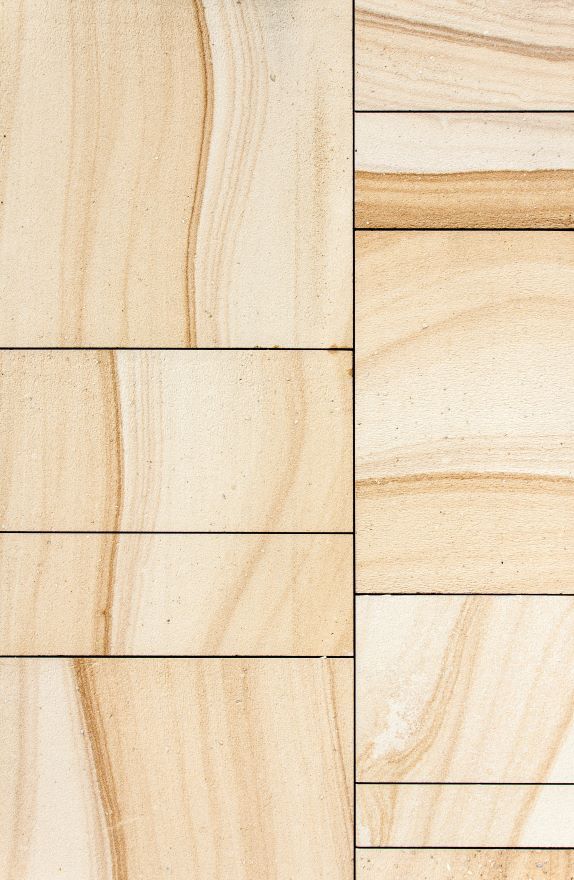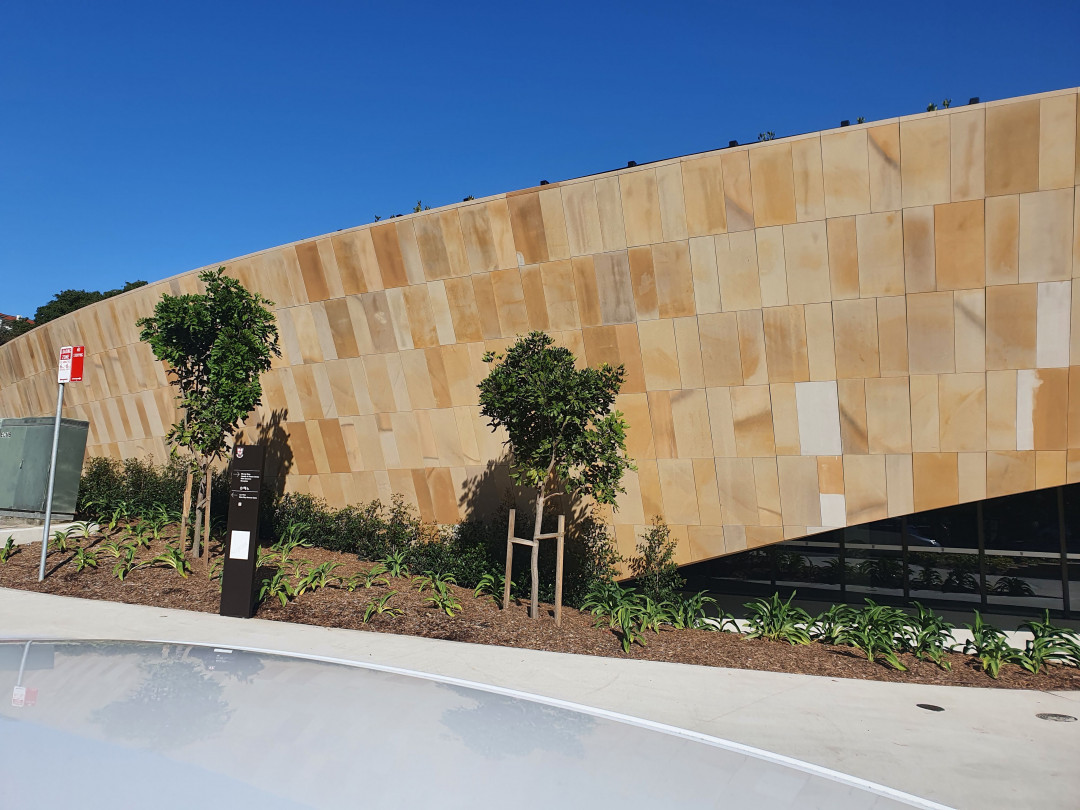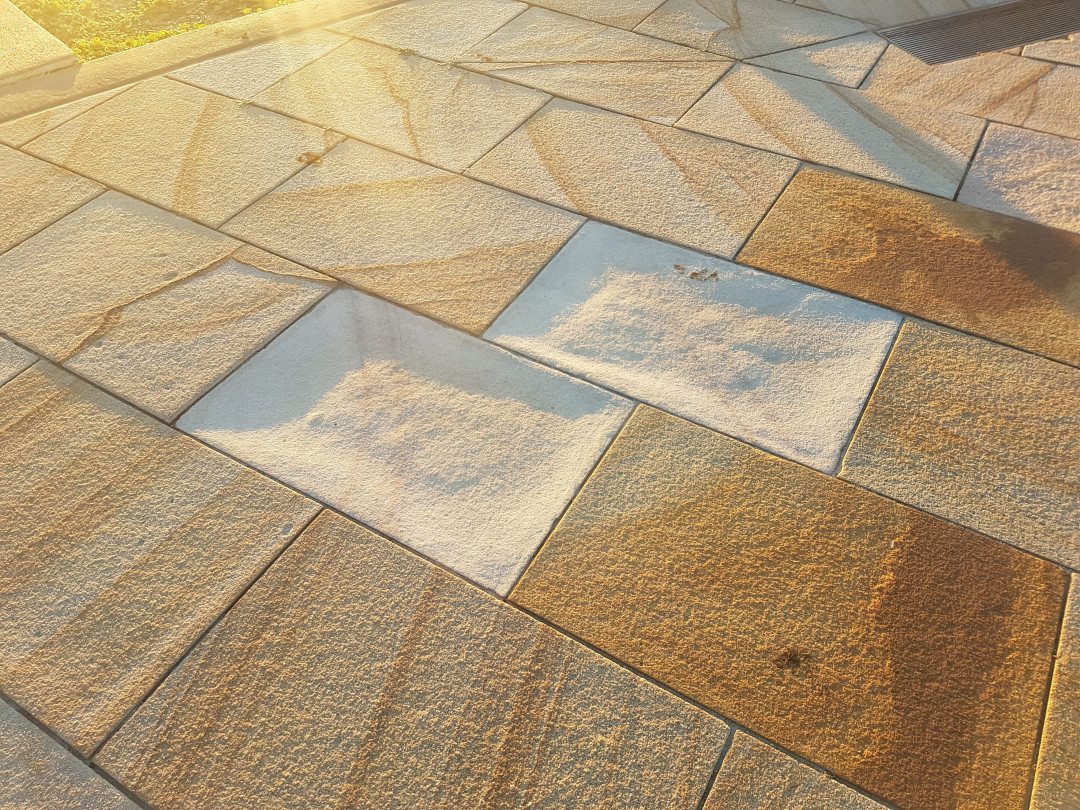Sandstone – Protection and Maintenance




Geology
Sandstone is a “clastic” sedimentary rock composed of sand size weathered detrital material having a minimum 60% of quartz and consolidated over a long period of time. Sandstone is sourced from environments where large amounts of sand has been deposited over many years, including beaches, deserts, flood plains, deltas and the like. The environments where the sediments are deposited, is crucial in determining the characteristics of the compacted sandstone, including its grain size, sorting, composition and particular mineralogy. Sandstones form a diverse group of dimension stones and ranging from soft to hard, plain coloured to highly variable “liesegang” banding patterns formed by natural iron and manganese mineralogy.

Installation Notes
Due to Sandstone having very high porosity, it is important to consider the long term effects of its use in any given circumstance. If sandstone is left to age naturally, it will almost always attract soiling in the form of mould, pollution and general organic soils. In many cases, it is not always the soiling that does damage to the stone, but it is the inevitable cleaning program to restore it that does the damage. Sandstone is a very soft material and is easily damaged by high pressure cleaning machines and the like.
When installing sandstone in a walling application that includes mechanical or adhesive fixing, it is very valuable to consider the option of presealing the stone with a quality consolidating sealer and water repellent that is adhesive matched. Using a properly adhesive matched product like this, will not provide strengthening of the stone and excellent resistance to moisture and mould, but will improve adhesion by up to 50%.
Oxidation
Sandstone contains varying amounts of natural iron and manganese within the stone. These irons are dormant in nature, but become active as being exposed to moisture and oxygen, through the cutting and finishing of the stone. As these irons (commonly FE2O3 or Ferric Oxide) come into contact with moisture and oxygen, they react and corrode to create a reddish-brown discolouration in the stone. The most common time for this to occur, is soon after processing, making treating and preventing this issue, very difficult

Salt Attack
Sandstone more than almost any other stone, is particularly prone to what we call “salt attack”. Salt attack is when salt water enters the stone, the water then evaporates leaving the salts deposited in the stone. The soluble salts then form crystals within the pores of the masonry. As the salt crystals grow, the masonry is disrupted and decays by fretting and loss of surface skins. This salt water can come from direct contact in coastal environments and salt water swimming pools, or can come from the soils beneath and are carried up into walls by rising damp. When the dampness evaporates from the walls the salts are left behind, slowly accumulating to the point where there are sufficient to cause damage. Repeated wetting and drying leads to the cyclic precipitation of salts and the progressive decay of the stone.
Further notes on Salt Attack
The cost of protecting sandstone from salt attack by using a quality consolidator and sealer, is far outweighed by the cost of inaction. The stone in the picture below, was left untreated, to age naturally. This stone paving, has eroded so significantly from salt water, that it now presents a trip hazard and is being replaced.

Protecting Sandstone from Graffiti
Protecting sandstone from graffiti can present a number of unforeseen problems. Sandstone typically has a very porous texture and if treated with an anti-graffiti surface coating, this coating can be problematic to remove in the event of a graffiti attack. The other consideration to make is how the graffiti is expected to be removed. In areas where regular graffiti attacks are an issue, it is beneficial to consider using a consolidator to strengthen the stone. This will provide the stone with extra strength to weather cleaning with pressure cleaning equipment. To retain the natural appearance of Sandstone, it is essential to use a penetrating sealer anti-graffiti product that doesn’t actually form a film, but lowers the surface energy of the stone at the surface. Lastly, it is important to remember, that no anti-graffiti product is ever complete proof against graffiti attacks. A premium quality solution, will simply make graffiti removal easy and successful.
For more information, contact an Actichem representative.




 Indonesia
Indonesia
 Australia
Australia
 Philippines
Philippines
 Hongkong
Hongkong
 Singapore
Singapore
 Malaysia
Malaysia







